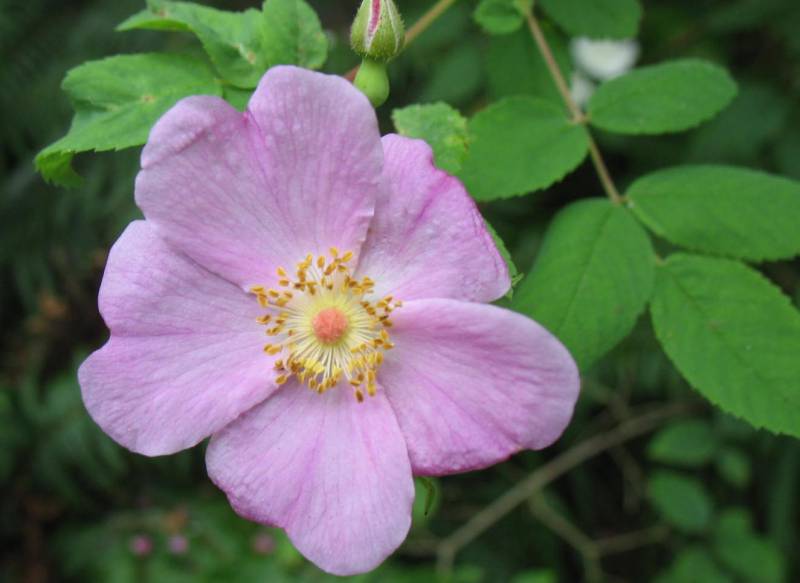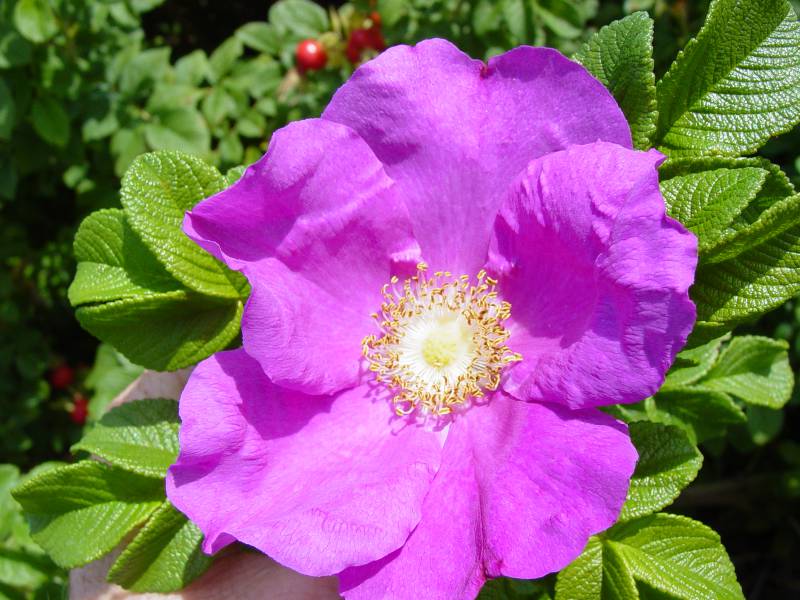Rosa pisocarpa
Rosa rugosa
clustered rose, peafruit rose
rugosa rose
Leaves alternate, pinnate, puberulent on the lower surface, not glandular;
leaflets 5-9, elliptic to ovate, 1.5-4 cm. long and 0.7-2 cm. wide, finely serrate.
Flowers small, in flat-topped cymes terminating the branches of the season, seldom solitary;
calyx lobes 5, 1-1.5 cm. long and 2.5-3.5 mm. wide at the base, constricted in the middle, with coarse, stalked glands on the back; the calyx tube glabrous and bluish-glaucous, 3-5 mm. thick;
petals 5, 1.2-2 cm. long, pink;
stamens and pistils numerous.
Hips purplish, globose or ellipsoid, 6-12 mm. long and thick, the achenes numerous, 3 mm. long, stiffly long-hairy along one side.
Rosa pisocarpa
Rosa rugosa
Occurring west of the Cascades crest and east in the Columbia River Gorge in Washington; southern British Columbia to California.
Occurring west of the Cascades crest in coastal marine habitats; Alaska to Oregon; also in the north-central and northeastern areas of North America.
- Local floras:
BC,
CA,
OR,
WA
- Local Web sites:
CalFlora,
CalPhotos,
Flora NW,
PNW Herbaria,
Turner Photog.
WildflowerSearch
iNaturalist (observations)
USDA Plants Database
- LBJ Wildflower Center
- SEINet
- Plants of the World Online
- Encyclopedia of Life
- Wikipedia
- Google Image Search
- Local floras:
BC,
OR,
WA
- Local Web sites:
Flora NW,
PNW Herbaria
WildflowerSearch
iNaturalist (observations)
USDA Plants Database
- LBJ Wildflower Center
- SEINet
- Plants of the World Online
- Encyclopedia of Life
- Wikipedia
- Google Image Search



